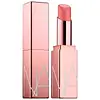What's inside
What's inside
 Key Ingredients
Key Ingredients

 Benefits
Benefits

 Concerns
Concerns

No concerns
 Ingredients Side-by-side
Ingredients Side-by-side

Hydrogenated Polyisobutene
EmollientTriisostearin
Skin ConditioningSqualane
EmollientBis-Diglyceryl Polyacyladipate-2
EmollientDiphenylsiloxy Phenyl Trimethicone
Skin ConditioningPolyethylene
AbrasiveEthylhexyl Methoxycinnamate
UV AbsorberMicrocrystalline Wax
Emulsion StabilisingDiisostearyl Malate
EmollientCocos Nucifera Oil
MaskingGardenia Taitensis Flower Extract
Skin ConditioningTocopheryl Acetate
AntioxidantSimmondsia Chinensis Seed Oil
EmollientPunica Granatum Flower Extract
Skin ConditioningTocopherol
AntioxidantGlyceryl Diisostearate
EmollientSimethicone
EmollientTrimethylolpropane Triethylhexanoate
EmollientLauryl PCA
HumectantBHT
AntioxidantSilica
AbrasiveAluminum Hydroxide
EmollientPolysilicone-2
Tin Oxide
AbrasivePhenoxyethanol
PreservativeCI 75470
Cosmetic ColorantCI 77491
Cosmetic ColorantCI 77492
Cosmetic ColorantCI 77499
Cosmetic ColorantMica
Cosmetic ColorantCI 45410
Cosmetic ColorantCI 15850
Cosmetic ColorantCI 77891
Cosmetic ColorantHydrogenated Polyisobutene, Triisostearin, Squalane, Bis-Diglyceryl Polyacyladipate-2, Diphenylsiloxy Phenyl Trimethicone, Polyethylene, Ethylhexyl Methoxycinnamate, Microcrystalline Wax, Diisostearyl Malate, Cocos Nucifera Oil, Gardenia Taitensis Flower Extract, Tocopheryl Acetate, Simmondsia Chinensis Seed Oil, Punica Granatum Flower Extract, Tocopherol, Glyceryl Diisostearate, Simethicone, Trimethylolpropane Triethylhexanoate, Lauryl PCA, BHT, Silica, Aluminum Hydroxide, Polysilicone-2, Tin Oxide, Phenoxyethanol, CI 75470, CI 77491, CI 77492, CI 77499, Mica, CI 45410, CI 15850, CI 77891
Isododecane
EmollientDimethicone
EmollientTrimethylsiloxysilicate
EmollientHydrogenated Polycyclopentadiene
Disteardimonium Hectorite
StabilisingTocopheryl Acetate
AntioxidantTripeptide-1
Skin ConditioningXanthan Gum
EmulsifyingSodium Hyaluronate
HumectantPropylene Carbonate
SolventTriethoxycaprylylsilane
Aluminum Hydroxide
EmollientIsohexadecane
EmollientEthylene/Propylene/Styrene Copolymer
Butylene/Ethylene/Styrene Copolymer
Ethyl Vanillin
MaskingPhenoxyethanol
PreservativeCI 42090
Cosmetic ColorantCI 77491
Cosmetic ColorantCI 77492
Cosmetic ColorantCI 77499
Cosmetic ColorantCI 45410
Cosmetic ColorantCI 15850
Cosmetic ColorantCI 77891
Cosmetic ColorantCI 19140
Cosmetic ColorantCI 15985
Cosmetic ColorantIsododecane, Dimethicone, Trimethylsiloxysilicate, Hydrogenated Polycyclopentadiene, Disteardimonium Hectorite, Tocopheryl Acetate, Tripeptide-1, Xanthan Gum, Sodium Hyaluronate, Propylene Carbonate, Triethoxycaprylylsilane, Aluminum Hydroxide, Isohexadecane, Ethylene/Propylene/Styrene Copolymer, Butylene/Ethylene/Styrene Copolymer, Ethyl Vanillin, Phenoxyethanol, CI 42090, CI 77491, CI 77492, CI 77499, CI 45410, CI 15850, CI 77891, CI 19140, CI 15985
 Reviews
Reviews

Ingredients Explained
These ingredients are found in both products.
Ingredients higher up in an ingredient list are typically present in a larger amount.
Aluminum Hydroxide is a form of aluminum. It can be naturally found in nature as the mineral gibbsite. In cosmetics, Aluminum Hydroxide is used as a colorant, pH adjuster, and absorbent.
As a colorant, Aluminum Hydroxide may add opacity, or reduce the transparency. Aluminum hydroxide is contains both basic and acidic properties.
According to manufacturers, this ingredient is an emollient and humectant. This means it helps hydrate the skin.
In medicine, this ingredient is used to help relieve heartburn and help heal ulcers.
There is currently no credible scientific evidence linking aluminum hydroxide in cosmetics to increased cancer risk.
Major health organizations allow the use of aluminum hydroxide in personal care products and have not flagged it as a carcinogenic risk at typical usage levels.
Learn more about Aluminum HydroxideCi 15850 is the pigment color red. It is an azo dye and created synthetically.
Azo dyes need to be thoroughly purified before use. This allows them to be more stable and longer-lasting.
This ingredient is common in foundations, lipsticks, and blushes. This color is described as brown/orangey red.
It has many secondary names such as Red 6 and Red 7. According to a manufacturer, Red 6 usually contains aluminum.
Learn more about CI 15850CI 45410 is a synthetic red-pigment and dye.
It often goes by both Red 28 or Red 27; manufacturers label both ingredients as CI 45410.
This dye is commonly found in makeup because it imparts a vivid color. Some types of this dye change color based on pH level and interaction with moisture:
Your skin has a natural pH of around 4.5 - 5.5.
According to the FDA, CI 45410 is not permitted for use in eye products.
Red 27 is a flourescein dye and commonly used as a fluorescent tracer in medicine.
Learn more about CI 45410Ci 77491 is also hydrated iron III oxide. It's sole purpose is to give a red/pink hue to products.
Iron III oxides are classified as inorganic chemicals for coloring.
Synthetically created Ci 77491 is considered safer than those naturally found. This is because the synthetically created version may contain less impurities. Iron oxides are generally non-toxic and non-allergenic.
Learn more about CI 77491Ci 77492 is also hydrated iron III oxide. It's sole purpose is to give a yellow hue to products.
Iron III oxides are classified as inorganic chemicals for coloring.
Synthetically created Ci 77492 is considered safer than those naturally found. This is because the synthetically created version may contain less impurities. Iron oxides are generally non-toxic and non-allergenic.
Learn more about CI 77492Ci 77499 is also hydrated iron III oxide. It is created from mixing red and black iron oxides. This helps give shades of darkness to a product.
Iron III oxides are classified as inorganic chemicals for coloring.
Ci 77891 is a white pigment from Titanium dioxide. It is naturally found in minerals such as rutile and ilmenite.
It's main function is to add a white color to cosmetics. It can also be mixed with other colors to create different shades.
Ci 77891 is commonly found in sunscreens due to its ability to block UV rays.
Learn more about CI 77891Phenoxyethanol is a preservative that has germicide, antimicrobial, and aromatic properties. Studies show that phenoxyethanol can prevent microbial growth. By itself, it has a scent that is similar to that of a rose.
It's often used in formulations along with Caprylyl Glycol to preserve the shelf life of products.
Tocopheryl Acetate is AKA Vitamin E. It is an antioxidant and protects your skin from free radicals. Free radicals damage the skin by breaking down collagen.
One study found using Tocopheryl Acetate with Vitamin C decreased the number of sunburned cells.
Tocopheryl Acetate is commonly found in both skincare and dietary supplements.
Learn more about Tocopheryl Acetate